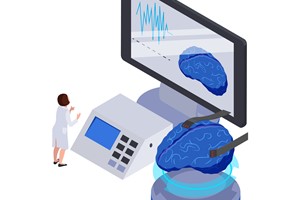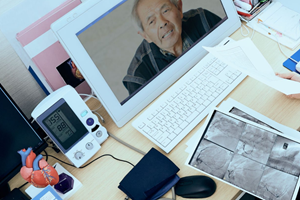In a collaborative effort between the Korea Institute of Machinery and Materials (KIMM) and Chungnam National University Hospital, a pioneering robotic bronchial endoscopic system has been developed, promising to revolutionize emergency interventions for airway blockages in individuals ranging from infants to the elderly.
Led by Principal Researcher Ki-Young Kim of KIMM and overseen by Professor Jae-Won Chang of Chungnam National University Hospital, the research team achieved a significant breakthrough with the creation of an advanced robotic bronchial endoscopic system. This innovative technology aims to swiftly address airway obstructions caused by foreign substances or food, minimizing side effects and streamlining intervention procedures.
The key features of this cutting-edge system include multidirectional endoscopic forceps, ocular position tracking capability, and a foot pedal control mechanism. During a clinical trial conducted on a miniature pig, the joint research team successfully extracted a foreign substance from the bronchus, showcasing the system's efficacy in real-world scenarios.
The endoscopic forceps, integral to the system's functionality, are designed to be long and flexible, allowing for easy insertion into the working channel of the endoscopic camera device. Equipped with gripper-shaped ends, these forceps enable the removal of polyps and examination of small tissues within internal organs during endoscopy procedures.
What sets this robotic bronchial endoscopic system apart is its integration of technology from surgical robots, which enables precise manipulation of the endoscope's position. By linking the camera of the bronchoscope to a robotic apparatus and securing it to a multi-joint stand, medical personnel can navigate the device with exceptional accuracy. The system also incorporates versatile joint technology on the endoscopic forceps, further enhancing maneuverability and facilitating the removal of foreign bodies from targeted locations within the airway.
Moreover, KIMM has developed groundbreaking "drivable area estimation technology," which aids in detecting obstacles and automatically identifying alternative routes to prevent collisions. This innovation holds significant promise not only for medical applications but also for enhancing vehicle navigation systems in various settings.
Principal Researcher Ki-Young Kim expressed enthusiasm for the system's adaptation of technology from robotic laparoscopic surgeries, remarking on its potential to broaden surgical applications, including outpatient procedures. Professor Jae-Won Chang, who supervised the preclinical test, highlighted the system's effectiveness in removing foreign bodies while minimizing side effects, paving the way for its application in upper respiratory surgeries.
In conclusion, the development of this robotic bronchial endoscopic system represents a major stride forward in emergency medical interventions, offering enhanced precision, reduced personnel requirements, and improved patient outcomes. As research continues and the technology evolves, its potential impact on medical practice is poised to be substantial, promising a future where airway emergencies can be addressed with unprecedented efficiency and effectiveness.










